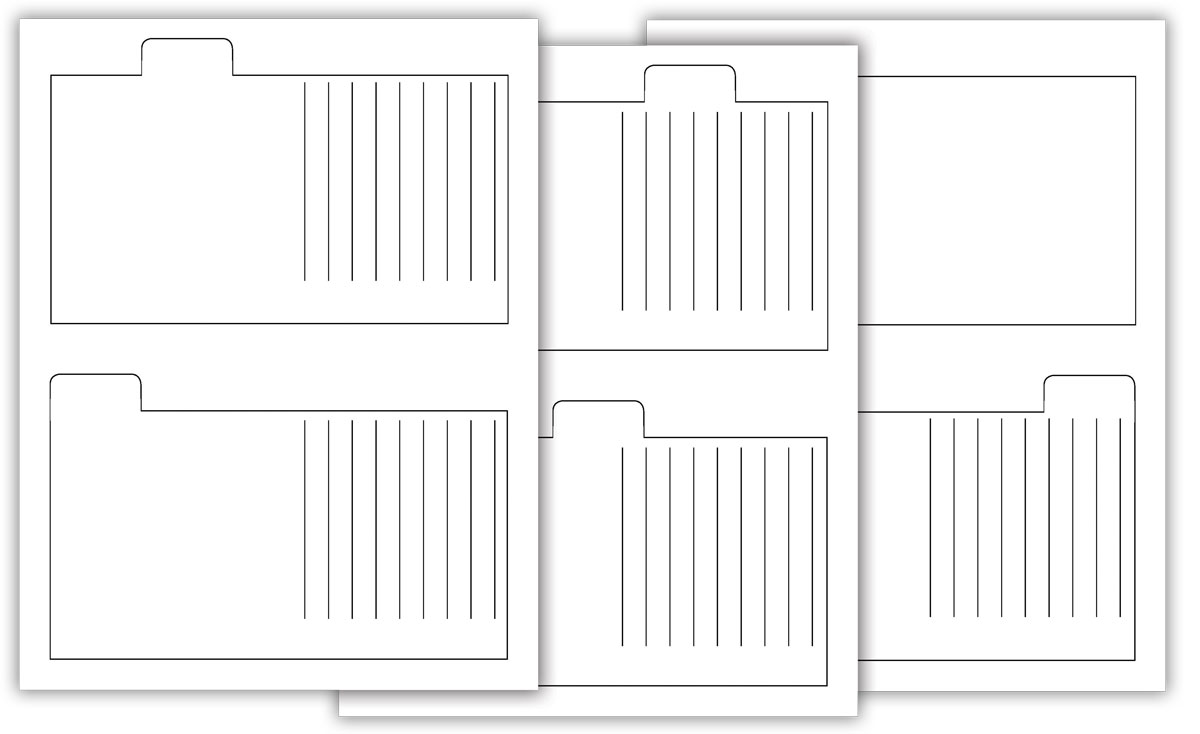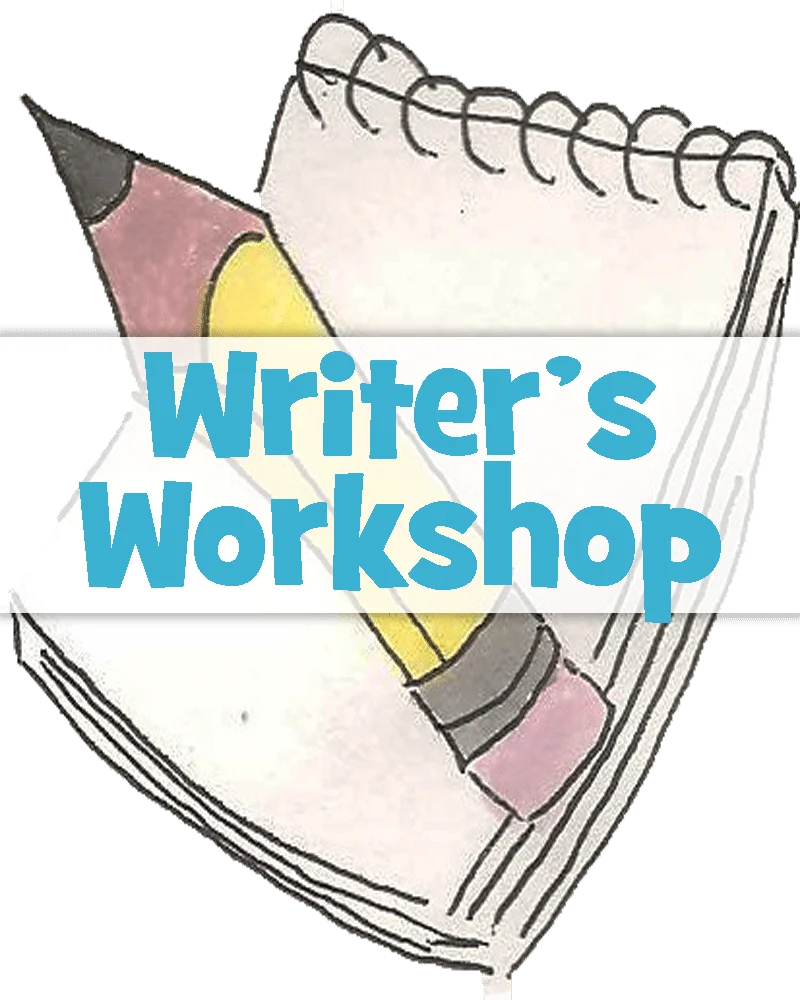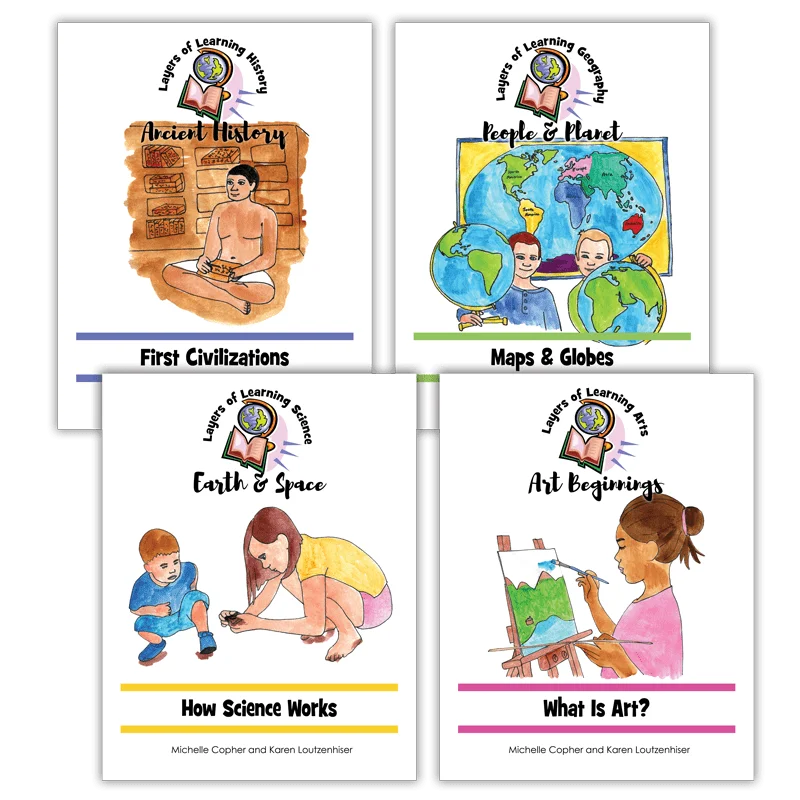Writer’s Workshop is a writing program your whole family can use together, from emergent writers right up to Mom and Dad. This is a sample exercise about making a tabbed booklet. Try it with all your kids.

This Writer’s Workshop exercise is from Writer’s Workshop Reports and Essays. In this unit your family will learn to write about information, research, and organize essays in standard ways. Everything from simple report and essay skills to five-paragraph essays is taught, step-by-step, to help your writers grow. Join us for a family-style writing program in Writer’s Workshop. You can learn how to create your own Writer’s Workshop in your homeschool from the Writer’s Workshop Guidebook.
Use some of the same skills it takes to write essays by creating your own informational five-tabbed booklets.
Step 1 Mini-Lesson
Start each Writer’s Workshop lesson off with a 5-10 minute mini-lesson with all of your kids. The sidebars of each Writer’s Workshop unit are lined with mini-lesson ideas to choose from. For this lesson, you could review the parts of speech by playing with Mad Libs.
Step 2 Exercise: Five-Page Tabbed Booklet
Spend most of your Writer’s Workshop time on the exercise, which should last as long or as short as you need it to, day to day.
All you do is print the booklet. It is three sheets of paper. You will cut out the pages, assemble them in order with the cover on front and staple them along the right hand side.
You can choose to print the blank template, without lines.

Or print the lined template, which leaves room at the top of each page for an illustration.

Fill your booklet with any topics you like. Here are some examples.
- Five volcanic belts of Canada
- Five greatest mapmakers of all time
- Five rivers of Idaho
- Five classical composers
- Five types of landscapes
- Five types of magnets
- Five life cycles
- Where I live (my house, my town, my state or province, my country, my continent)
- Five ancient pyramids around the world
Create your booklet using a combination of colorful pictures and writing. Look up information from books, movies, and websites to learn about five components of your topic. Fill in the five sections in an organized way.
Here’s an example of a completed exercise.

This exercise will go into the Journal section of your Writer’s Notebook or in your Layers of Learning notebook if it is about one of the subjects you are learning about from a unit.
Step 3: Writing Project
Most exercises stay in the Writer’s Notebook to be used as a reference, for inspiration, or to be tossed at a later date. About once a month, one piece of writing should be taken clear through the writing process. This is your writing project.
As you take a five-tabbed booklet through the writing process, remember that it should be corrected, tidy, and colorful.
You can learn details about the Writing process and how to mentor writers in the Writer’s Workshop Guidebook.
Step 4: Evaluating Writing
Every piece of writing that makes it to publication needs to be shared before an audience and then evaluated. The audience should cheer for the writer and ask curious and positive questions about the writing when appropriate. Evaluations should be designed to help the writer grow, not just to create a grade. Every Writer’s Workshop Unit comes with specific helps for the evaluator including a rubric that is specific to the genre being taught. General writing evaluation criteria and strategies are taught to the parent or mentor in the Writer’s Workshop Guidebook.
What You’ll Find in Every Writer’s Workshop Unit
Printables
You’ll find printables in every Writer’s Workshop unit. They are tools for helping kids learn the writing process, skills, and ways to write in specific genres. They make lessons in a famil- school setting a little more manageable for parents too.
Ideas Banks
In each unit, kids will be doing a variety of writing exercises as well as one project. They will learn to take their project through the writing process, incorporating what they’ve learned during the exercises. Each unit has a big idea bank for kids to choose from so they can find something personally meaningful to write about.
Rubrics
Every unit also includes a rubric to help parents or mentors know how to give feedback that will help writers grow. Rubrics are tools writers can use to self-check and mentors can use to know what to look for in each writing genre. We never just slap a grade on writing. Every bit of feedback is a tool to improve and grow.
More Writer’s Workshop

Learn more about Writer’s Workshop and how it can help you create writers (not just grammar workbook filler-outers!). We invite you to check out the Writer’s Workshop Curriculum Guide. Then see how Layers of Learning can change your whole homeschool into a happy, hands-on family school with the Writer’s Workshop Guidebook. We believe learning is about exploring! If you like exploring, you’ll love the rest of the Layers of Learning program too – history, geography, science, and art, all taught with your whole family exploring together.
Free Samples
Try family-style homeschooling now with free samples of four Layers of Learning units when you subscribe. You'll get to try family-style history, geography, science, and arts with your children.
You can unsubscribe any time.


